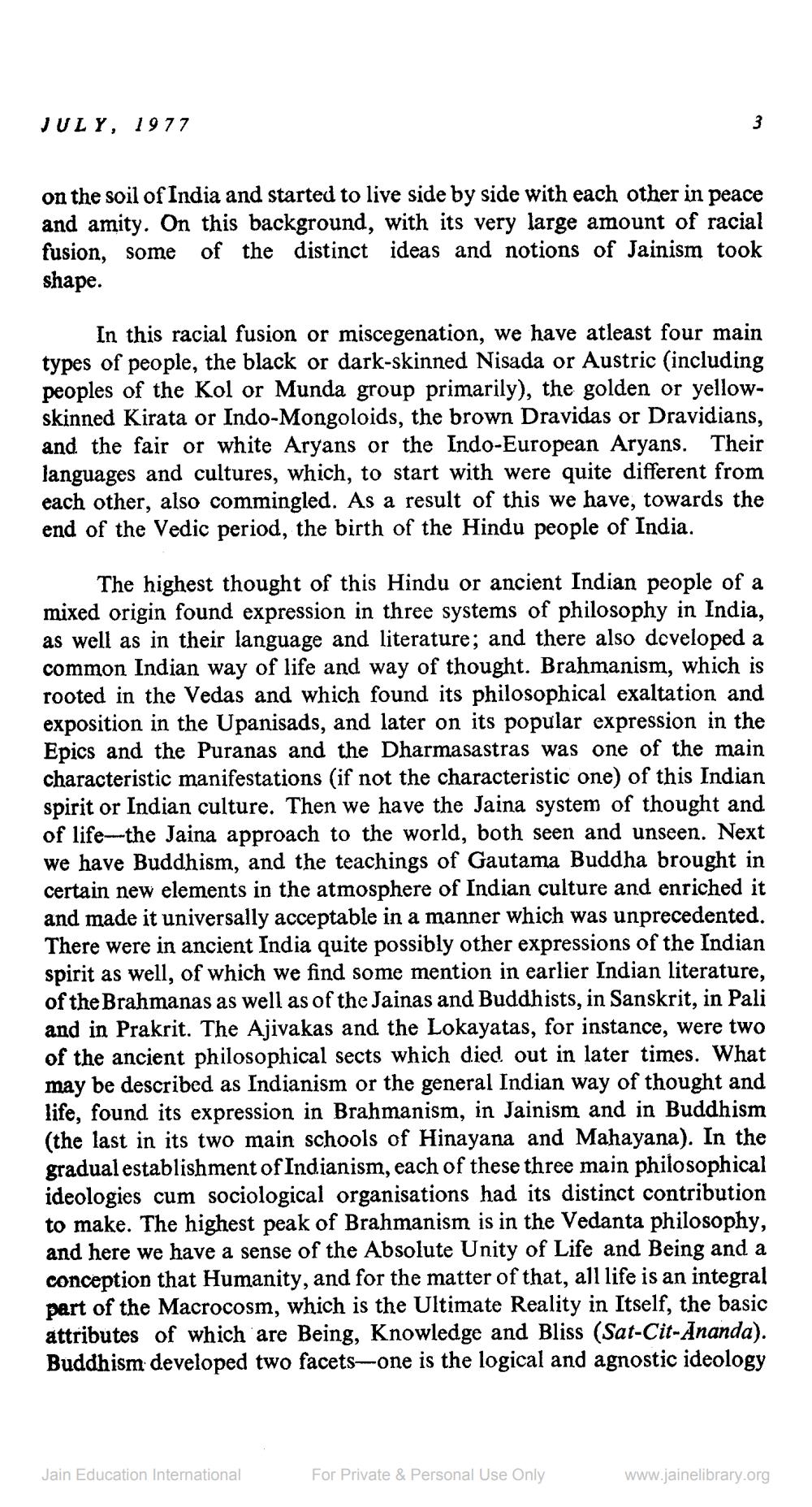Book Title: Jain Journal 1977 07 Author(s): Jain Bhawan Publication Publisher: Jain Bhawan Publication View full book textPage 5
________________ JULY, 1977 on the soil of India and started to live side by side with each other in peace and amity. On this background, with its very large amount of racial fusion, some of the distinct ideas and notions of Jainism took shape. 3 In this racial fusion or miscegenation, we have atleast four main types of people, the black or dark-skinned Nisada or Austric (including peoples of the Kol or Munda group primarily), the golden or yellowskinned Kirata or Indo-Mongoloids, the brown Dravidas or Dravidians, and the fair or white Aryans or the Indo-European Aryans. Their languages and cultures, which, to start with were quite different from each other, also commingled. As a result of this we have, towards the end of the Vedic period, the birth of the Hindu people of India. The highest thought of this Hindu or ancient Indian people of a mixed origin found expression in three systems of philosophy in India, as well as in their language and literature; and there also developed a common Indian way of life and way of thought. Brahmanism, which is rooted in the Vedas and which found its philosophical exaltation and exposition in the Upanisads, and later on its popular expression in the Epics and the Puranas and the Dharmasastras was one of the main characteristic manifestations (if not the characteristic one) of this Indian spirit or Indian culture. Then we have the Jaina system of thought and of life-the Jaina approach to the world, both seen and unseen. Next we have Buddhism, and the teachings of Gautama Buddha brought in certain new elements in the atmosphere of Indian culture and enriched it and made it universally acceptable in a manner which was unprecedented. There were in ancient India quite possibly other expressions of the Indian spirit as well, of which we find some mention in earlier Indian literature, of the Brahmanas as well as of the Jainas and Buddhists, in Sanskrit, in Pali and in Prakrit. The Ajivakas and the Lokayatas, for instance, were two of the ancient philosophical sects which died out in later times. What may be described as Indianism or the general Indian way of thought and life, found its expression in Brahmanism, in Jainism and in Buddhism (the last in its two main schools of Hinayana and Mahayana). In the gradual establishment of Indianism, each of these three main philosophical ideologies cum sociological organisations had its distinct contribution to make. The highest peak of Brahmanism is in the Vedanta philosophy, and here we have a sense of the Absolute Unity of Life and Being and a conception that Humanity, and for the matter of that, all life is an integral part of the Macrocosm, which is the Ultimate Reality in Itself, the basic attributes of which are Being, Knowledge and Bliss (Sat-Cit-Ananda). Buddhism developed two facets-one is the logical and agnostic ideology Jain Education International For Private & Personal Use Only www.jainelibrary.orgPage Navigation
1 ... 3 4 5 6 7 8 9 10 11 12 13 14 15 16 17 18 19 20 21 22 23 24 25 26 27 28 29 30 31 32 33 34 35 36 37 38 39 40 41 42 43 44 45 46 47 48 49 50 51 52
